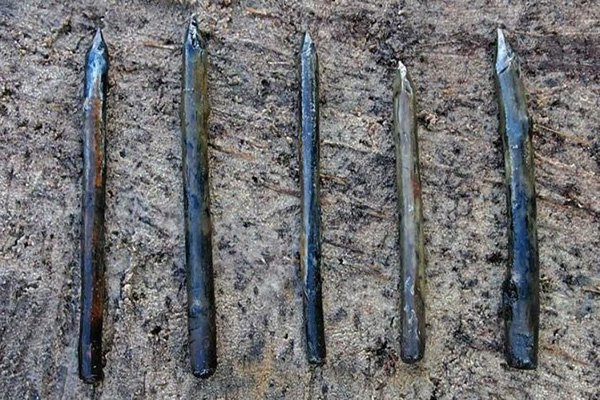In ancient lore shamans were magic practitioners that helped shape the first human societies. As wise as they were feared, the shaman mystics were a high-rank figure in the human society, capable of winning battles, de-cursing allies, they could heal physical wounds and the soul, and also communicate with animal spirits and even shape shift.

Butterfly Maiden
In 2012, archaeologists uncovered an unusual site near Lake Świdwie, in north-western Poland. After meticulously analyzing the settlement using modern techniques, the team of researchers concluded that it dated back more than 9,000 years.
Yew blades were found near the lake Swidwie in POLAND...

This discovery is unique, as found in other shaman settlements in Siberia and Mongolia only. It apparently served as a sanctuary from where the spirit practitioners engaged into rituals and out-of-body experiences which are now out of reach for modern science or written history. It demonstrates that ancient Europeans had knowledgeable advisors who could read the stars, use advanced remedies from nature, and who knows what other ancient techniques that are now forever lost.
Artists-as-shamans are needed in these warring times. Art heals and reveals that which science cannot. These artists are people in a quest for life's deeper meaning. Shamanism is universally concerned with the well-being of both nature and human nature, and the relationship between them. How can modernity know so little for knowing so much?
In making art, the artist breathes herself out to allow the breathing in of universal air, intelligent with many minds, alive with energy. Artist, shape-shifter, shaman or poet, all are lovers of metamorphosis, all are capable of visions, insights and dreams.
Real artists have taken up the role of the shaman in our times. Possibly because both art and shamanism use the realm of metaphor where feeling is expressed and where healing happens. With metaphoric vision, empathy flows, knowing no borders. Both artist and shaman create harmony within an individual, and between the individual and the wider environment, a way of thinking essential for life, which we have almost forgotten about in our pursuit of money and technology and power.
Artists often suffer in their youth, according to Joseph Campbell, as if ‘the whole unconscious has opened up and they’ve fallen into it’. Shamanism, like art, is a calling, and a young person may be ‘doomed to inspiration’ as the anthropologist Waldemar Bogoras wrote of the Siberian shamanic vocation. In a painful transformation lasting months or years, the young shaman loses interest in life, eats little, is withdrawn or mute, sleeping most of the time. It reads like a portrait of the young artist in a devastating depression. The young shaman overcomes the illness through the practice of shamanism, just as many artists know that their own best medicine is found in their work, like Van Gogh, who was guided by the sun from the dark side of the mind, to the ecstasy of being.
